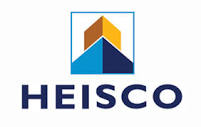Global Cell Culture Protein Surface Coating Market to Grow at a CAGR of 13.2% by 2021 - Growing Demand for Animal-free Synthetic Protein Surface Coating - Research and Markets
Research and Markets has announced the addition of the "Global Cell Culture Protein Surface Coating Market 2017-2021" report to their offering.
The global cell culture protein surface coating market to grow at a CAGR of 13.20% during the period 2017-2021.
The report, Global Cell Culture Protein Surface Coating Market 2017-2021, has been prepared based on an in-depth market analysis with inputs from industry experts. The report covers the market landscape and its growth prospects over the coming years. The report also includes a discussion of the key vendors operating in this market.
According to the report, one driver in market is growing focus on cell therapy. Globally, more than 2,000 clinical trials on cell therapy were carried out in 2015. These trials include stem cell therapy and immune cell therapy that have great significance in the overall biotechnology industry. Cell culture protein surface coating products help researchers to study the basic structural unit of cells for developing model systems for research and studying cellular functions and structures.
Key Market Trends:
-
Increasing preference for 3D cell culture over 2D cell cultures
-
Growing demand for animal-free synthetic protein surface coating
-
Growing number of M&A and strategic alliances
- Increase in outsourcing activities
Key vendors
- Corning
- EMD Millipore
- Thermo Fisher Scientific
-
Sigma-Aldrich
Other prominent vendors
- Abcam
- Agilent Technologies
- AM-Pharma
- BioLamina
- BioMedTech Laboratories
- Bio-Techne
- Cytoskeleton
- GlaxoSmithKline
-
Others
Key Topics Covered:
PART 01: Executive summary
PART 02: Scope of the report
PART 03: Research Methodology
PART 04: Introduction
PART 05: An overview: Cell culture surfaces
PART 06: Market landscape
PART 07: Market segmentation by product type
PART 08: Geographical segmentation
PART 09: Decision framework
PART 10: Drivers and challenges
PART 11: Market trends
PART 12: Vendor landscape
PART 13: Key vendor analysis
For more information about this report visit http://www.researchandmarkets.com/research/4mr4gt/global_cell
View source version on businesswire.com: http://www.businesswire.com/news/home/20170505005307/en/




